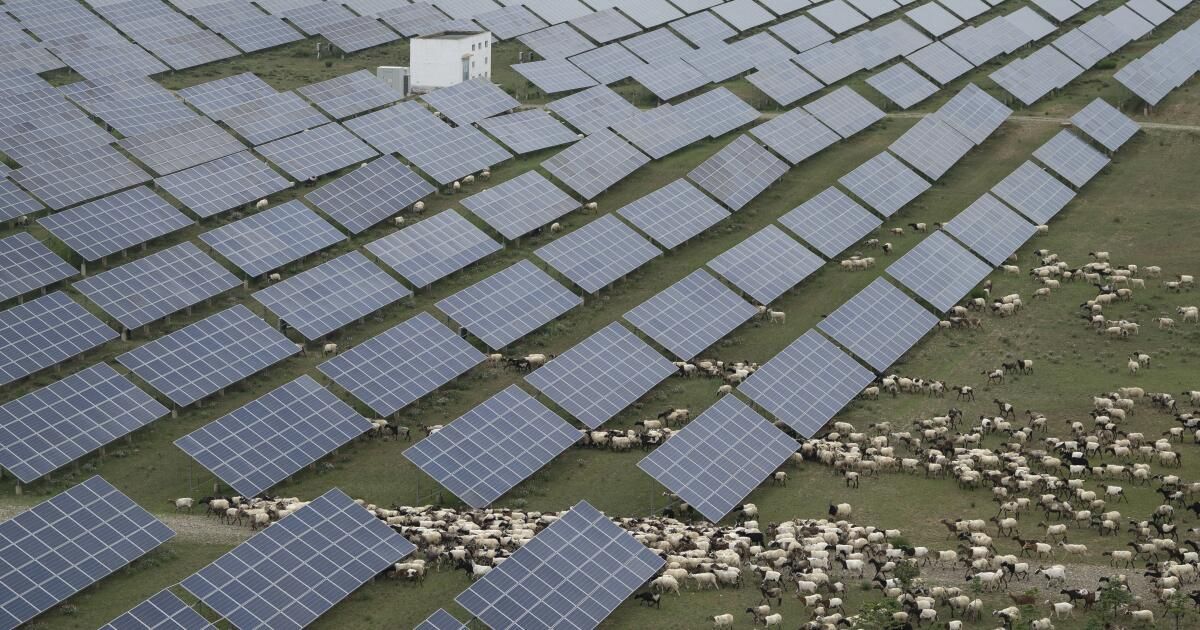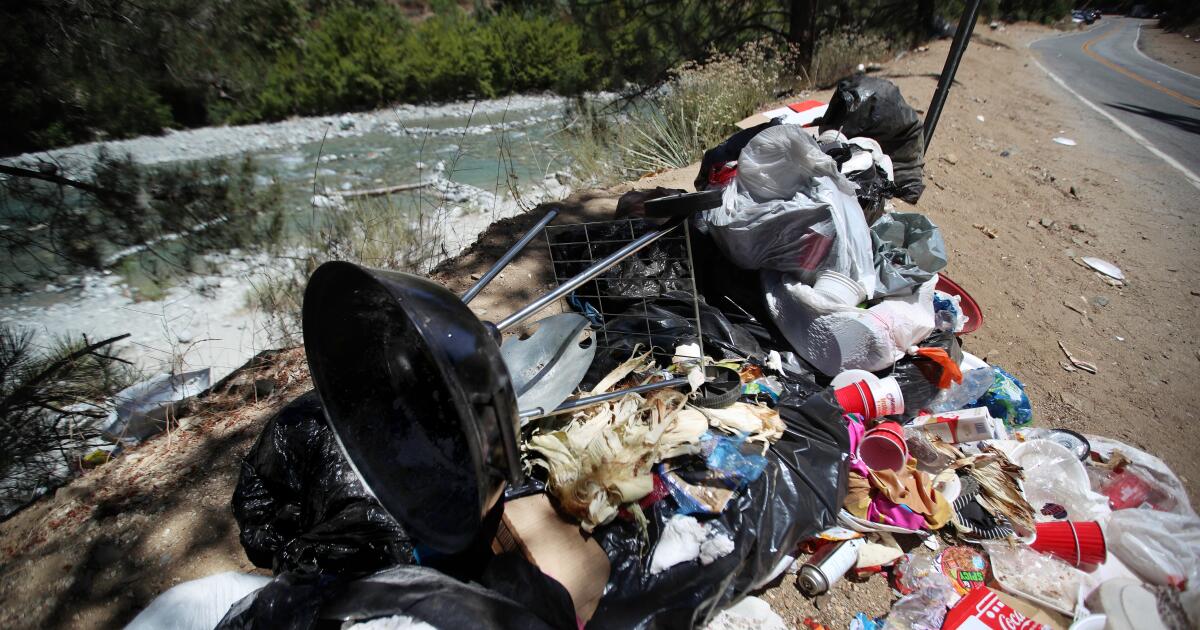While the Trump administration has effectively declared war on wind and solar energy, blocking all permits for projects on federal lands and pushing for a reduction in federal subsidies and tax credits, other nations are embracing renewable energy as a strategy to build economic and political strength. China remains the world's largest emitter of greenhouse gases; However, it has also become the world leader in the manufacturing and deployment of renewable energy, electric vehicles and batteriesachieved through sustained support for industrial policy that began just two decades ago.
The motivations were not primarily environmental. Chinese leaders viewed these technologies as strategic industries of the future and believed that the country that mastered them would gain long-term economic and political advantages. Thus, Clean technologies were included. within China's 2010 “Strategic Emerging Industries” policy and its “Made in China 2025” strategy.
Chinese opinion leaders conceived the strategy in terms of the times. The superpower had missed each of the four major waves of technological change of industrialization that had allowed the European powers and the United States to become global hegemons, and China's elites and high-level academics were determined not to. the same mistake again. china communist Party leadership saw clean technologies as part of a set of innovations, including artificial intelligence and advanced manufacturing, that were fundamental to chinese modernization and global competition.
That dominance in clean technologies would allow China to position itself as a leader in global climate talks; build stronger ties with countries in the Global South that need cheaper, cleaner energy; and reducing the suffocating pollution within China was just one more reason to bet on clean technologies.
This strategy has been very successful. Today, China manufactures more than 70% of solar photovoltaic modules, 80% of the cells that make up those modules, and 90% of the wafers used to make the cells. It manufactures more than 60% of the world's electric vehicles and accounts for approximately three-quarters of global battery cell production, with even greater dominance in the production of cathodes and anodes and in the processing of critical minerals. China has rapidly expanded its offshore wind capacity and now accounts for more than half of global capacity (41.8 gigawatts), up from just 1 gigawatt in 2015. China's renewable energy and electrification boom is starting to reduce its greenhouse gas emissions, while creating the conditions for other countries to transition away from fossil fuels. according according to a recent analysis by think tank Ember. The surge is putting China so far ahead in clean energy that it is now in a league of its own.
Meanwhile, President Trump's team is severely hampering the development of clean energy projects in the United States and even threatening existing manufacturing investments. The regulatory attack on renewable energy is broad and clearly at odds with Trump's energy emergency declaration. The attacks on clean energy include the August stop order on the Revolution Wind offshore project, which was 80% complete, and the elimination of a panoply of support for clean energy in the so-called “One Big Beautiful Bill.” He recent ICE raid on a multibillion-dollar Hyundai-LG battery plant project in Ellabell, Georgia, was an own goal for an administration that claims to be returning manufacturing to the U.S.
It doesn't have to be like this. While Democrats and Republicans have deep disagreements about the risks of climate change and the role of fossil fuels in the future American energy mix, there is a political consensus that Americans can benefit from maximizing the availability of cheaper and more abundant energy. Even Saudi Arabia, the quintessential petrostate, is embracing renewable energy and seeking to purchase half of all its electricity from clean sources by 2030. Several Saudi companies announced a combined investment of $8.3 billion this year to launch massive new solar and wind energy projects, the wall street newspaper recently reported. The desert kingdom is also invest in becoming a major supplier of critical minerals, such as lithium, copper and rare earths.
It may seem funny that oil-rich Saudi Arabia is racing to go green. But more electricity from the sun means more barrels of oil they can save for export to willing buyers. And the truth is that solar panels made in China are now the cheapest and Easiest ways to become energy rich..
The rise of China as he The clean energy superpower and ambitions of a country like Saudi Arabia show that the United States is thinking small. The Trump administration appears to be thinking about the next three years, while rival nations are thinking about the next three decades.
Alex Wang is faculty co-director of the Emmett Institute on Climate Change and the Environment, professor of law at UCLA School of Law, and author of “Chinese Global Environmentalism” (forthcoming Cambridge 2025).
Perspectives
Perspectives from the LA Times offers AI-generated analysis of Voices content to provide all points of view. Insights does not appear in any news articles.
point of view
Perspectives
The following AI-generated content is powered by Perplexity. Content is not created or edited by the Los Angeles Times editorial staff.
Ideas expressed in the piece.
-
The Trump administration has declared war on renewable energy by blocking permitting for wind and solar projects on federal lands and rolling back federal subsidies and tax credits through the “One Big Beautiful Bill,” demonstrating a regulatory assault that is clearly at odds with the administration's energy emergency declaration.[2][3]. Among the administration's attacks on clean energy were the August stop-work order on the Revolution Wind offshore project, which was 80% complete, and an ICE raid on a multibillion-dollar Hyundai-LG battery plant project in Georgia, representing an own goal for an administration that claims to bring manufacturing back to the U.S.
-
China has become the world leader in renewable energy manufacturing and deployment thanks to sustained support for industrial policy that began two decades ago, motivated not primarily by environmental concerns but by the strategic recognition that clean technologies represent industries of the future that would confer economic and political advantages. Chinese leaders included clean technologies within the country's 2010 “Strategic Emerging Industries” policy and “Made in China 2025” strategy, considering these innovations critical to Chinese modernization and global competition. This strategy has proven to be tremendously successful: China now produces more than 70% of solar photovoltaic modules, 80% of solar cells, 90% of solar wafers, more than 60% of global electric vehicles, and approximately three-quarters of global battery cell production.
-
Even Saudi Arabia, the quintessential petrostate, is embracing renewable energy with plans to purchase half of all its electricity from clean sources by 2030, announcing combined investments of $8.3 billion this year for massive new solar and wind projects. The desert kingdom recognizes that Chinese-made solar panels are now the cheapest and easiest way to become energy rich, while more electricity from the sun means more barrels of oil to save for export. This shows that the United States is thinking small, with the Trump administration focused on the next three years while rival nations plan for the next three decades.
Different points of view on the topic.
-
Despite changes in federal policy, U.S. solar continues to see strong growth, with 16 GW of solar added through July 2025, representing nearly 75% of the 21.5 GW of overall added electric generation capacity.[1]. Solar is outperforming year on year and is projected to overtake wind as the third largest source of electricity, with forecasts showing 92.6 GW of additional solar capacity coming online through July 2028, which would put solar at around 250 GW of installed capacity, surpassing coal's projected 173 GW by 44%.[1].
-
Rather than abandon hope after federal setbacks, solar advocates are successfully shifting their focus toward action at the state level, with industry leaders pointing out that real decisions about grid deployment and resources are made at the state level.[3]. States such as Colorado and Arizona have taken proactive steps, with Colorado Governor Jared Polis issuing executive actions to help residents determine eligibility for the renewable energy tax credit and ensuring state agencies prioritize renewable energy projects, while Arizona Governor Katie Hobbs established the Arizona Energy Promise Task Force to expedite permits and accelerate energy deployment.[3]. Solar industry representatives emphasize that much of what states can do to make it easier and faster to bring more resources online involves low-cost measures such as enforcing interconnection schedules, developing flexible interconnection policies, and adopting automatic instant permitting systems.[3].
-
The solar industry's resilience comes from fundamental economic factors rather than federal incentives, and industry leaders argue that the driving factors now are economics and the need for speed, along with the attractiveness of solar and storage in terms of affordability and reliability.[3]. Solar energy has consistently been the fastest-growing source of electricity to meet growing demand, and the U.S. Energy Information Administration forecasts continued average electricity consumption growth of 1.7% through 2026, after growth was nearly flat between 2005 and 2020.[3]. Despite the federal challenges, the industry maintains that by focusing on the economic proposition that solar energy offers and its speed of energy generation, there are paths to overcome the current difficulties.[3].












